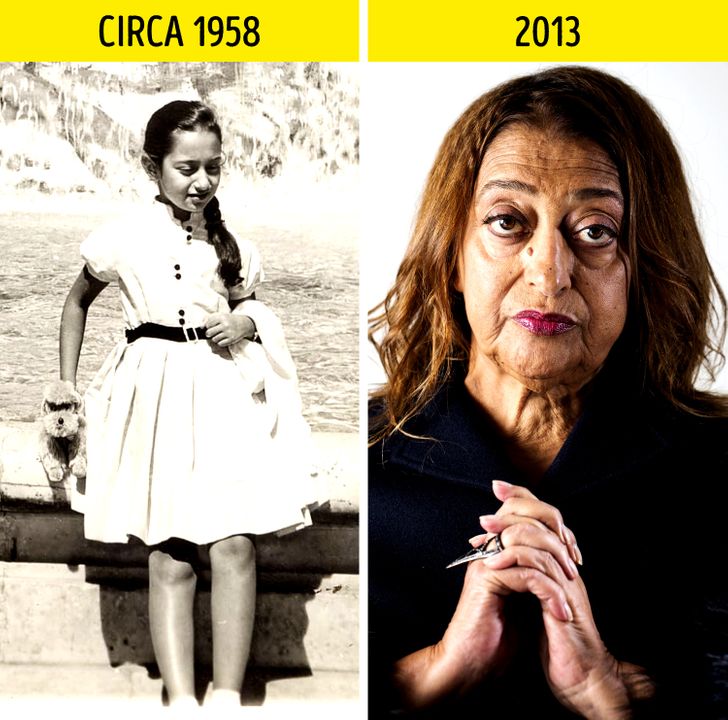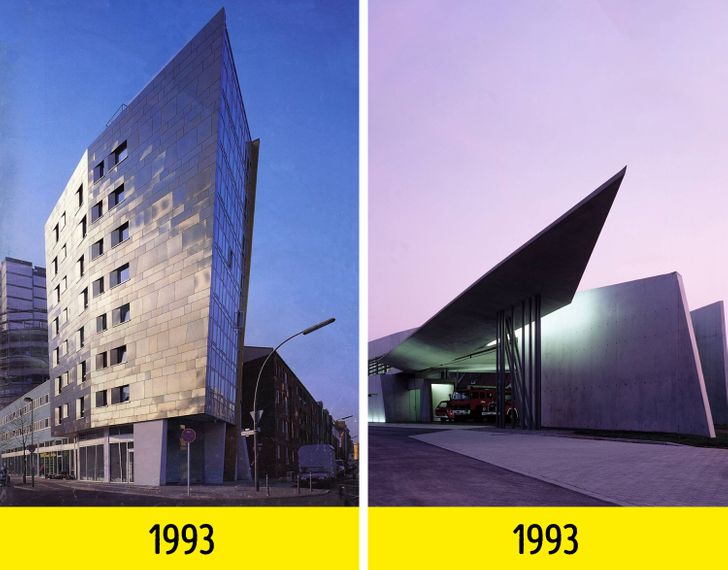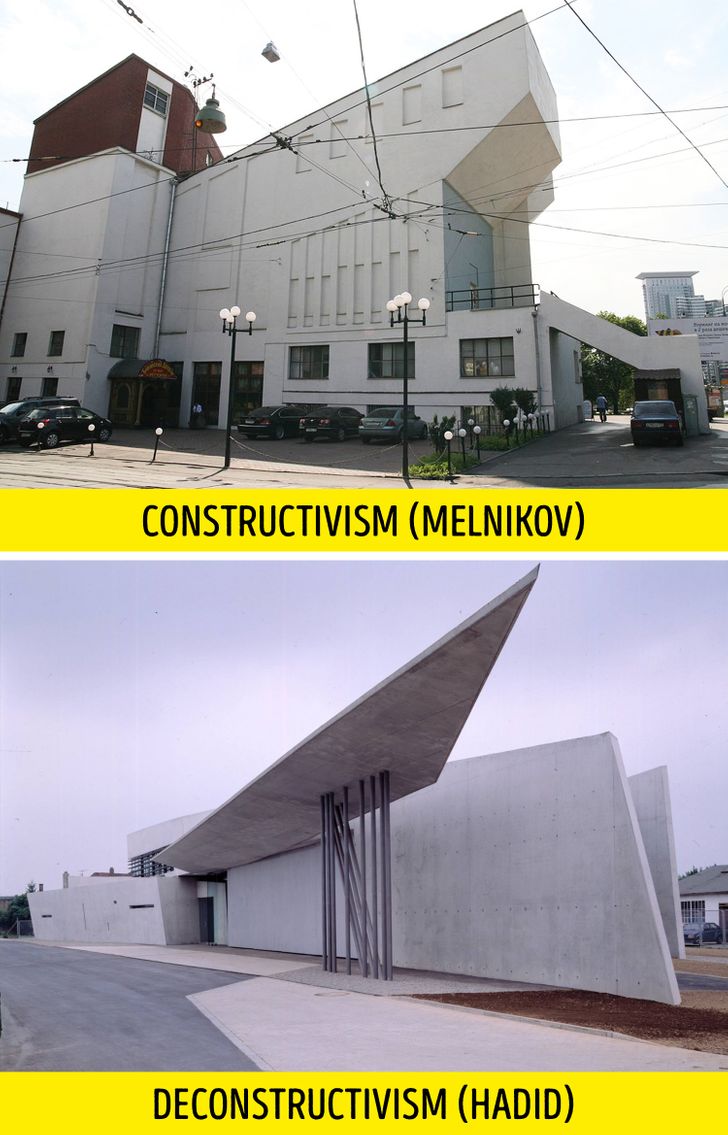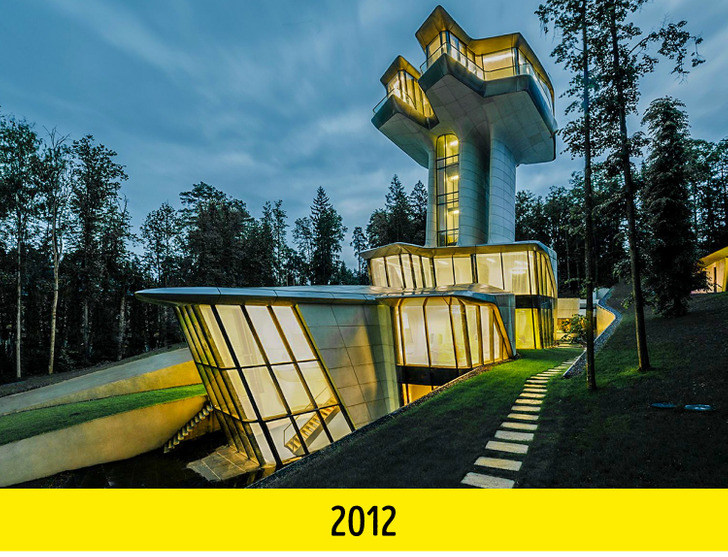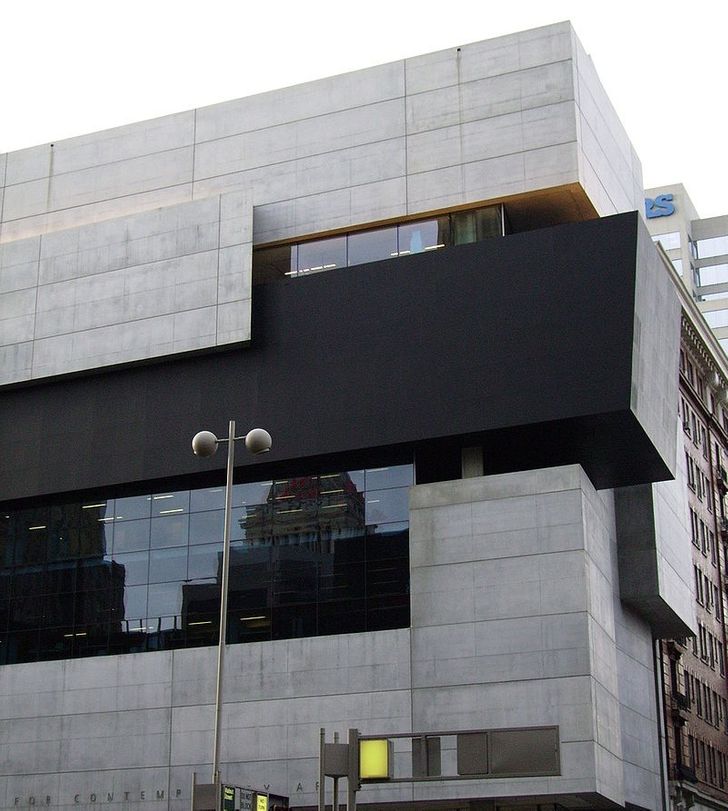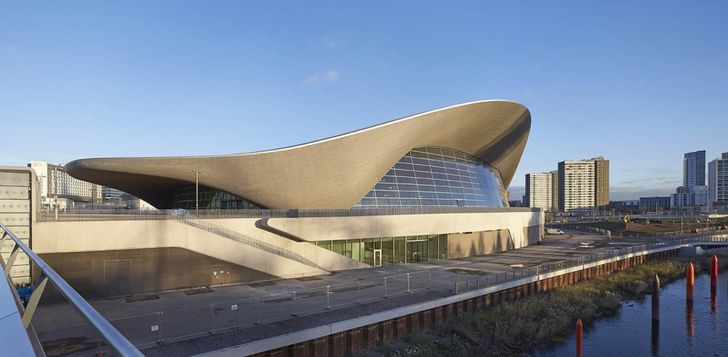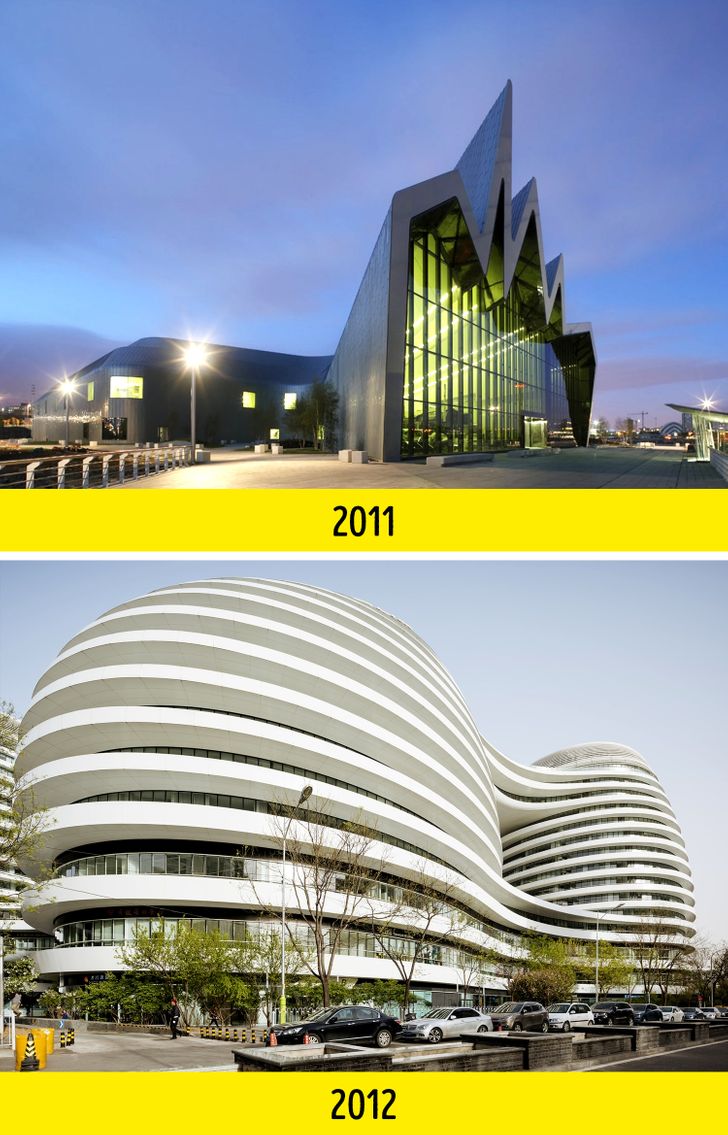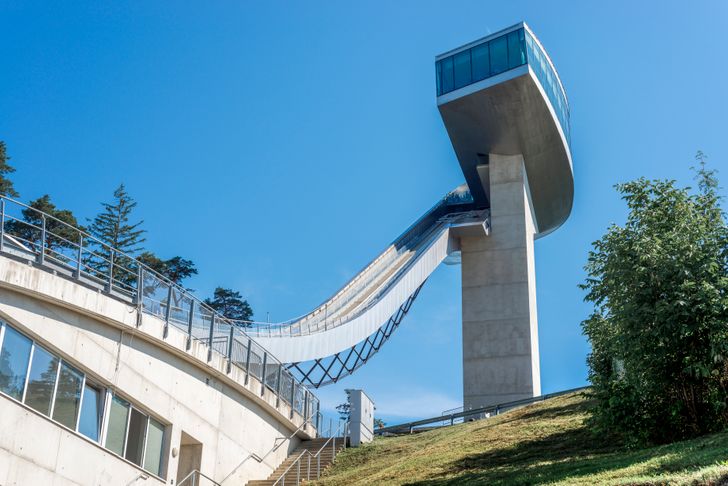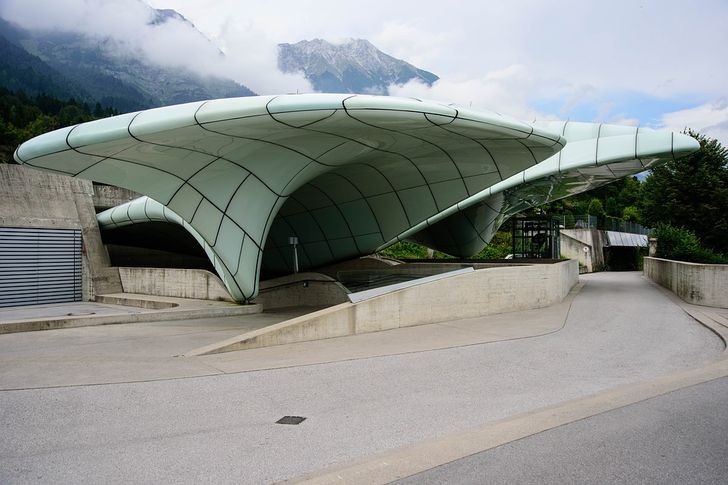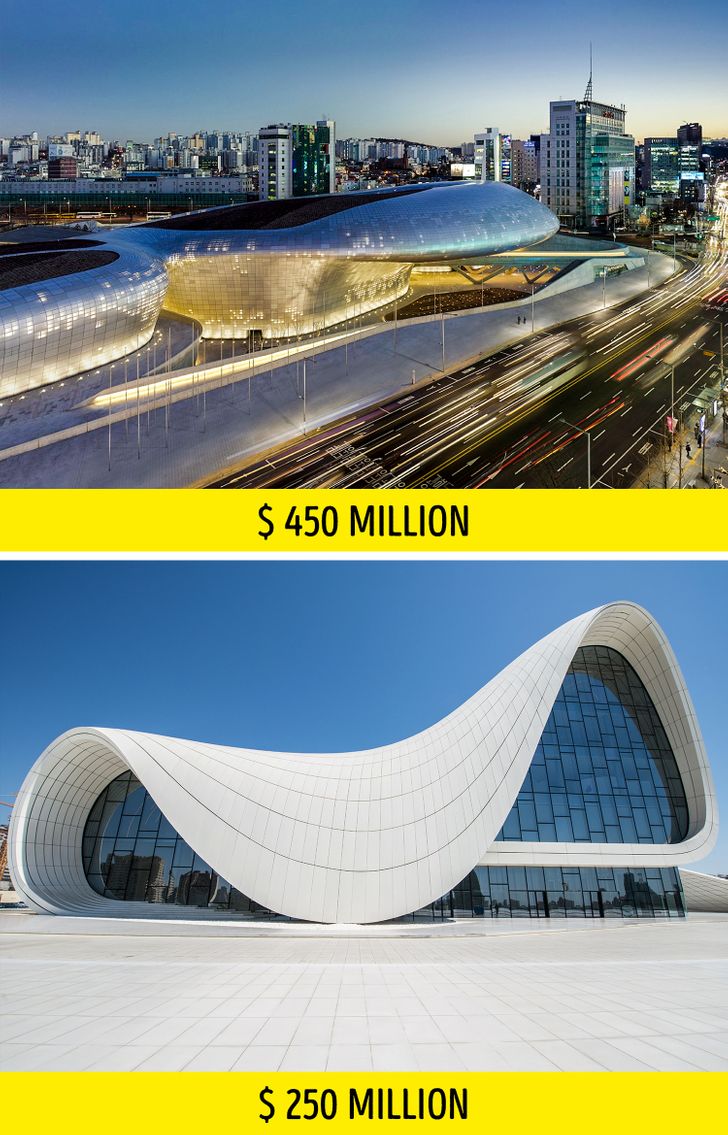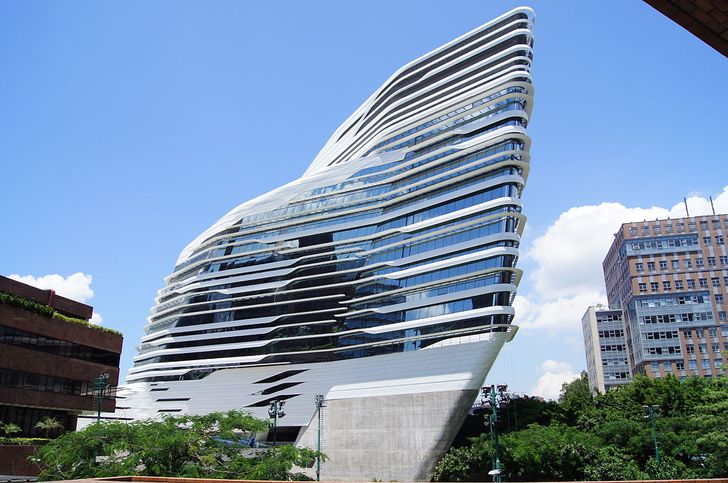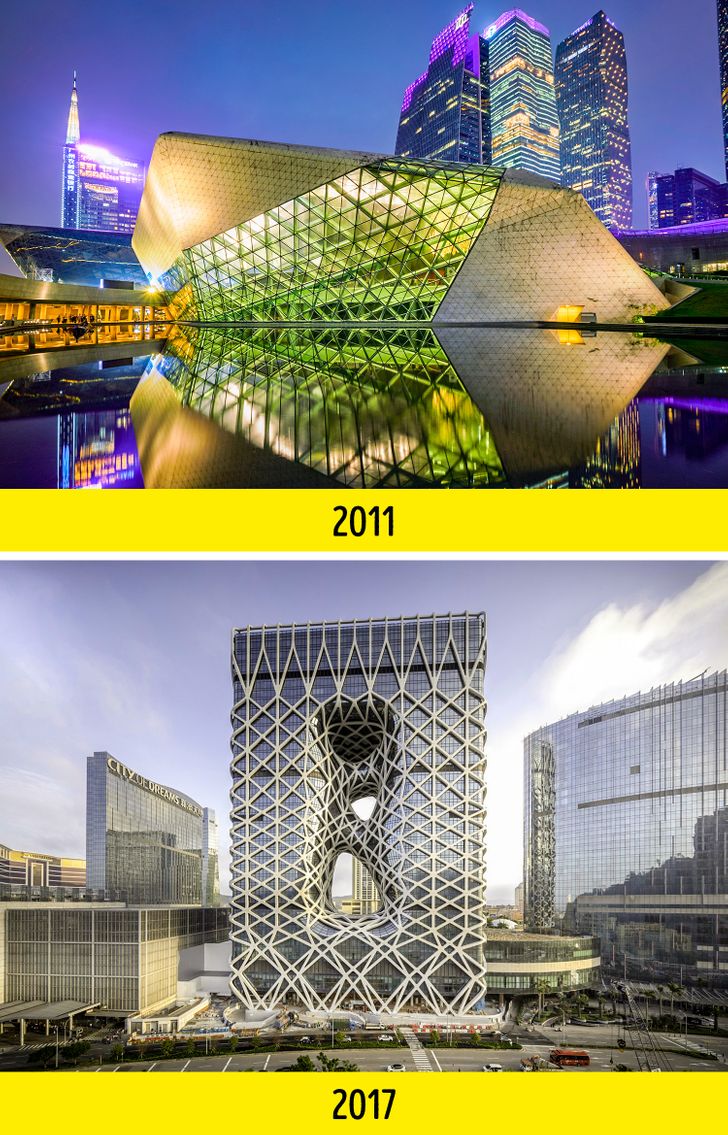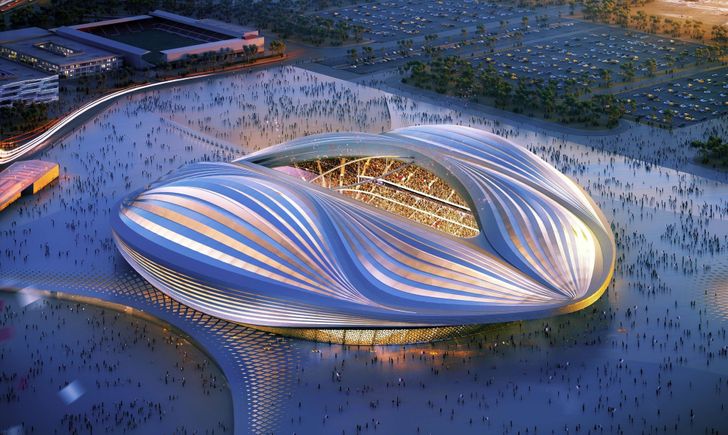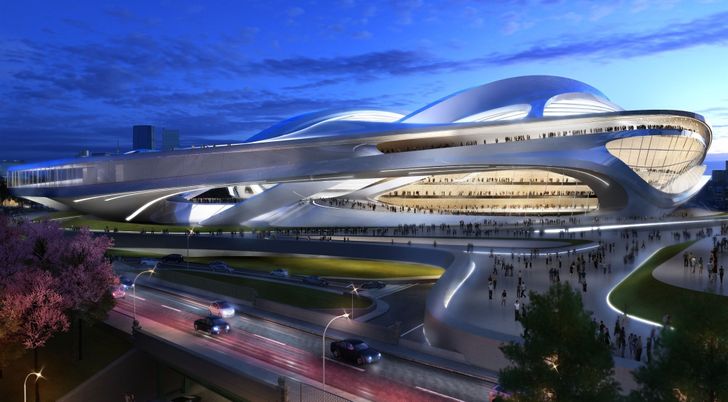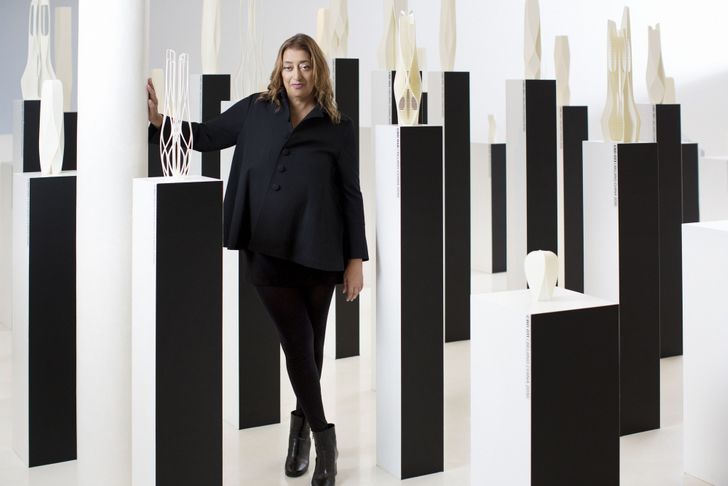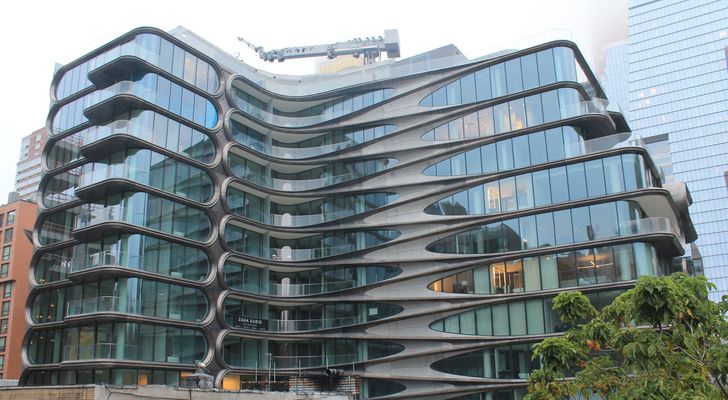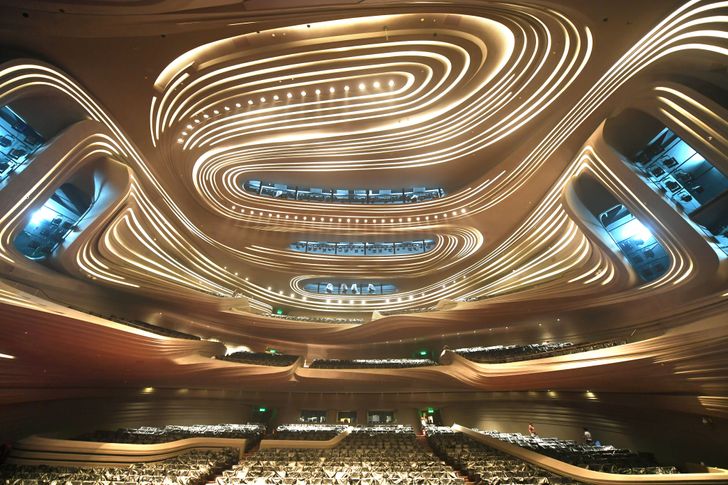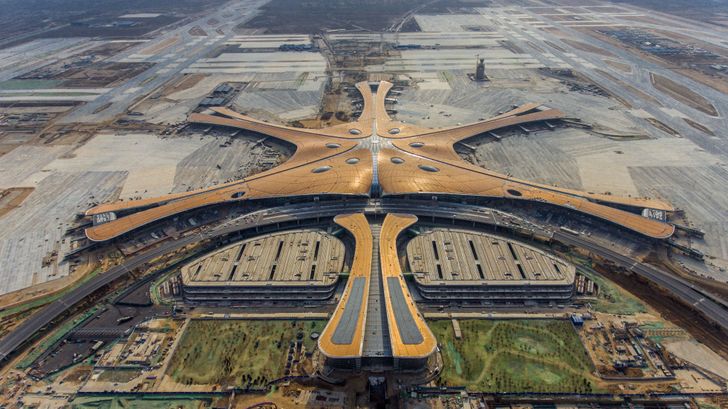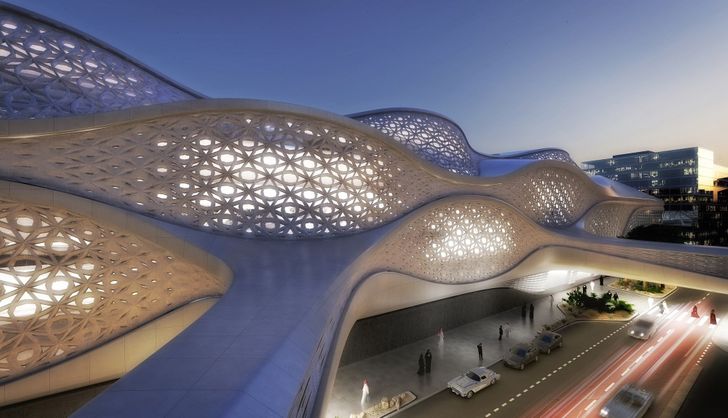She should make models for futuristic movies
How Zaha Hadid, Who Nobody Had Faith in, Became the Mozart of Architecture
On October 31st, one of the brightest woman architects of our time was born — Zaha Hadid, whose name can be translated from Arabic as glorious. In 2019, she would have turned 68 years old. She refused to see things in an ordinary way, her projects were called impossible to build and insane, she lost bids for 17 years, but she became the woman who totally changed the world of architecture.
We at Bright Side have always been charmed by the futuristic shapes of buildings of the great architect that are still being built today, after Hadid’s death, and we hope that her story will motivate us to try and implement our most amazing ideas.
This architecture superstar was born in 1950 in Baghdad.
Zaha was born into a wealthy Iraqi family so she didn’t have this classic story about a difficult childhood. By the way, the famous models Gigi and Bella Hadid are not related to Zaha, even though their father is also linked to the construction business.
In the beginning, Zaha wanted to become a mathematician and even studied science at the American University of Beirut. But at some point, she just realized that she really loved shapes, not numbers, and she shifted her concentration to architecture.
Soon after that, Hadid went to London where she met the famous Dutch architect Rem Koolhaas. He noticed Zaha’s talent right away and became her mentor.
The mentor called Zaha “a planet in her own orbit.” After Hadid finished the university, Koolhaas invited the young Hadid to work for his bureau in Rotterdam. After 3 years of collaboration, Zaha decided that she was ready to start her own independent firm and so she returned to London.
For 17 years, Hadid’s projects got rejected and she was called a “paper architect.”
When she dove into the world of architecture, Hadid worked on a lot of projects but they were criticized over and over again. Despite the amazing number of her ideas, before the beginning of the 90s, not a single building based on her blueprints was built.
Zaha’s projects won huge international competitions, but they remained only on paper because they were believed to be insane: too impossible to actually build. All that Zaha could do was continue to work “just in case” and hope that architecture would soon take a step forward.
And in 1982, it seemed that she got lucky: one of Hadid’s projects was approved — a sports club in the mountains of Hong Kong. But one year later, the customer canceled the construction and the project was not built.
Using the money she won in various competitions, Zaha decided to open her own office that would become a real empire 30 years later. Zaha didn’t give up and thanks to her persistence and strong nature, she continued to create her crazy, but beautiful projects.
She constructed her first building at the age of 44. It was a fire department.
On the left is the IBA house, on the right is the Vitra fire department.
In 1993, Hadid’s first project was finally built — a small fire department for a Vitra furniture company. It became a true masterpiece. It was something completely new in the world of architecture at the time. The building was really impressive in its shape — the curved and bent concrete slabs looked as if they froze while dancing.
By the way, that same year, another building by Zaha’s design was built — an IBA house. The local feminist community helped her with this. They were fighting for the presence of women in the modern architecture of Germany.
Zaha was a fan of Kazimir Malevich and constructivism.
Hadid was a big fan of Kazimir Malevich’s art and Russian avant-garde art in general. For her graduate work, a project for a bridge under the Thames, Zaha named it after the artist — Tectonics of Malevich.
Also, in her early projects, you can see the obvious connection with Russian constructivism. For example, if you compare her famous Vitra fire department with the works of constructivists, you can see the obvious similarities.
The famous architect managed to construct 2 significant buildings in Russia. The first one was the futuristic mansion of Vladislav Doronin, near the Rublevo-Uspenskoe highway, and the second one was the Moscow business center Dominion Tower.
In her future work, Zara preferred avant-garde and futurism styles.
At the same time, Hadid got both the “Oscar” for architecture and accusations that her buildings were not functional.
According to Zaha, the true interest in her works appeared after she took part in the construction of the Contemporary Arts Center in Cincinnati. Aside from that, it was the first museum in the US that was designed by a woman and you could definitely tell it was Hadid’s work — the walls that were on top of each other, the sharp corners, and the unexpected shapes.
But the true triumph for Hadid came in 2004. For her project for the London Aquatics Centre, she was awarded the Pritzker Architecture Prize, which is a sort of like an Oscar in the world of architecture. Zaha became the first woman to ever win this award.
After that, Hadid became one of the most popular and trendy architects in the entire world, but this also had a negative effect on her. The thing was that, soon, critics started to say that she was too interested in self-expression, rather than making her buildings functional.
So, after building the London Aquatics Centre, some viewers in the top rows complained that they couldn’t see what was happening in the pools of the arena because of the pretentious ceiling.
Another example is the Modern Art Museum MAXXI in Rome. Experts think that it is not suitable for exhibiting art. The thing is, the building is a long curved one-floor maze and it is hard to place any objects there. Besides, the museum turned out to be so huge, that even the big paintings were kind of lost inside of it. So, the MAXXI building is a monument of its own.
“Queen of the curve” was the description of Zaha’s creative methods.
The Guardian called Hadid the “Queen of the curve” that freed architectural geometry. It is true that Hadid spent her entire life breaking the stereotypes and the rules, and thinking outside the box. Besides, she denied geometry and she used a distorted perspective where curved lines were the center of attention.
Zaha almost always got what she wanted and did not allow anyone to doubt that she was right. This is probably why her most amazing projects ended up constructed and used, even though some people thought they were impossible.
By the way, Zaha Hadid’s architecture firm was one of the first that started to use the parametric approach in design. This approach allowed them to process a huge amount of data, so that very difficult structures of buildings could be formed. Besides, composite plastic was used to build the fantastic projects of the architect. This material allowed her to build the most impossible shapes.
In general, Hadid’s approach to architecture was very creative. She denied the function and rationalism and based her creations solely on her imagination.
Year after year, Hadid’s projects became more and more expensive and unbelievable.
At the beginning and in the middle of the 2000s, Zaha made her most ambitious ideas a reality. Everyone knows Hadid’s pretentious style, and she even has wannabes. Her buildings aren’t just objects but true pieces of art. They have been compared to spaceships — this is how unusual they look to the human eye.
Every next project Hadid does is more powerful than the previous ones. And of course, all of her ideas cost an awful lot of money. For example, the construction of the Dongdaemun Design Plaza in Seoul and the famous Heydar Aliyev Center in Baku cost hundreds of millions of dollars.
At the same time, the world was in an economic crisis in 2008 and spending a lot of money on something like this was not the smartest idea. Later, Zaha was criticized that the space in her projects was not used efficiently. But the architecture superstar denied all these accusations and still managed to find customers. In China, the Middle East, everything was alright with the economy, so they were able to afford even the most expensive buildings.
During this time, Hadid did projects like the 40-floor hotel in the Chinese city of Macao, an opera house in Guangzhou, a university in Hong Kong, and Galaxy SOHO in Beijing.
The scandals about building the stadiums in Qatar and Japan
Unfortunately, the final years of Zaha Hadid’s life were overshadowed by some unpleasant incidents in several countries. During the construction of her stadium project, several builders died in Qatar. The famous name of the architect triggered journalists and Zaha’s name often appeared in the media in a negative context, even though the design of the building was not dangerous for people.
Then, many critics thought that the Qatar stadium was shaped in a way that was too extravagant, maybe even provocative: some people thought that the building looked like a female sex organ. The author called these ideas ridiculous and claimed that the shape of this stadium was inspired by a traditional Arabic boat called dhow.
Another problem arose during the construction of the Olympic stadium in Tokyo. The project seemed to be too expensive: it would have taken $2 billion to build it. The Japanese press even compared this stadium with a sea turtle that would drag Japan to the bottom of the ocean.
Later, the government decided against this idea in favor of a simpler and cheaper alternative.
Even after the architect’s death, Hadid’s projects are still being implemented all over the world.
Zaha Hadid died at the age of 65 from a heart attack in a Miami clinic where she was being treated for bronchitis. One of the last projects she did was a house in New York.
Because architecture was Hadid’s only love, her projects were her family. But Hadid’s business continues to live on: her architecture firm partner, Patrik Schumacher, continues her work. They worked together for 28 years, so Patrik totally shares and understands Zaha’s principles. At the moment, the bureau is working on implementing more than 30 of Hadid’s works that are unfinished. Just recently, the Changsha Meixihu International Culture & Art Centre was built.
Also, this fall, the biggest international airport, Daxing in Beijing, was opened.
In the Saudi Arabia capital, the metro is going to be opened and the main station of it was designed by Hadid. The main part of the station will be built of white marble and the walls will be covered with golden plaques. According to the author, she was inspired by the sand dunes of Saudi Arabia.
And this is not an exhaustive list of the projects from the Queen of architecture, that will soon be constructed. So we are sure that Zaha Hadid is still very much alive and with us.
Have you seen any of Zaha Hadid’s buildings with your own eyes? Or would you like to visit some of them?
Comments
And oh my, her works are amaing! ?
Related Reads
A Homeless Woman Receives a Full Makeover and Impresses the Whole World

20+ Bright Side Readers Who Faced So Much Sass They Still Haven’t Come to Their Senses

“Looks Unreal,” Demi Moore Stuns in a Sheer Dress at 61 and Shocks Fans
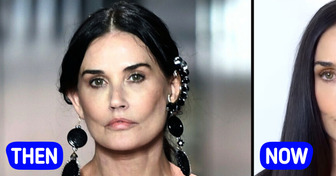
Pierce Brosnan’s Wife Shares a Touching Tribute to Him, Stuns Fans With Her Transformation

Meghan Markle’s Appearance Changed Because of One Detail Many Missed

Fans Are Struggling to Recognize Chris Hemsworth Because of His New Look, “He Looks Like Every Other Man Now”

I Told My MIL She’s Not Allowed to Babysit My Child Anymore

I Spent Years Covering My Face With Makeup, Now I Want the Whole World to See It

Young Woman Documents Her Double Jaw Surgery, and Leaves Everyone Stunned With the Results

My Best Friend Gave Her Baby the Same Name as My Stillborn

“She Looks 20 Years Younger,” a Woman Undergoes Transformative Surgery and Leaves Everyone Speechless
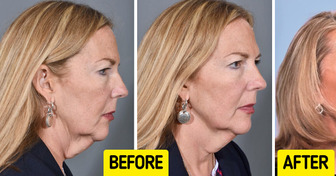
Jason Momoa and Lisa Bonet’s Daughter, 16, Makes a Rare Appearance, People Notice the Same Thing

